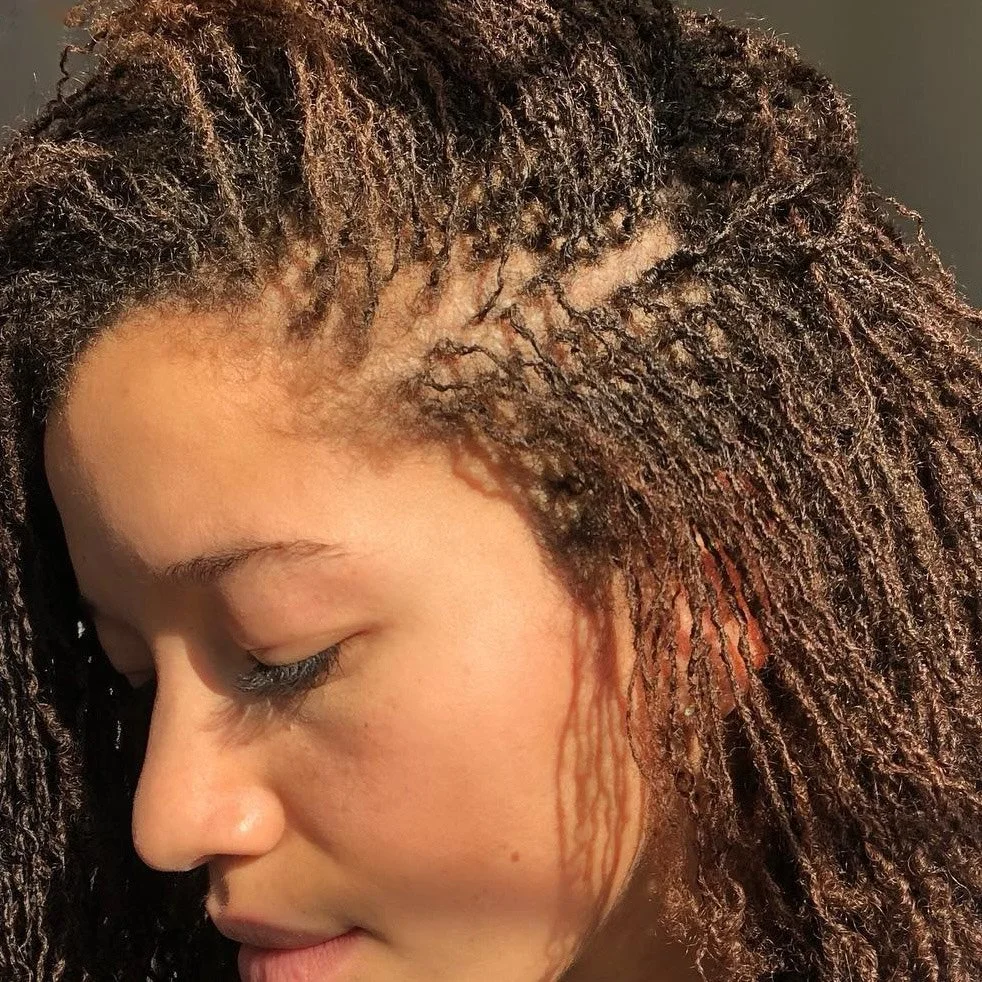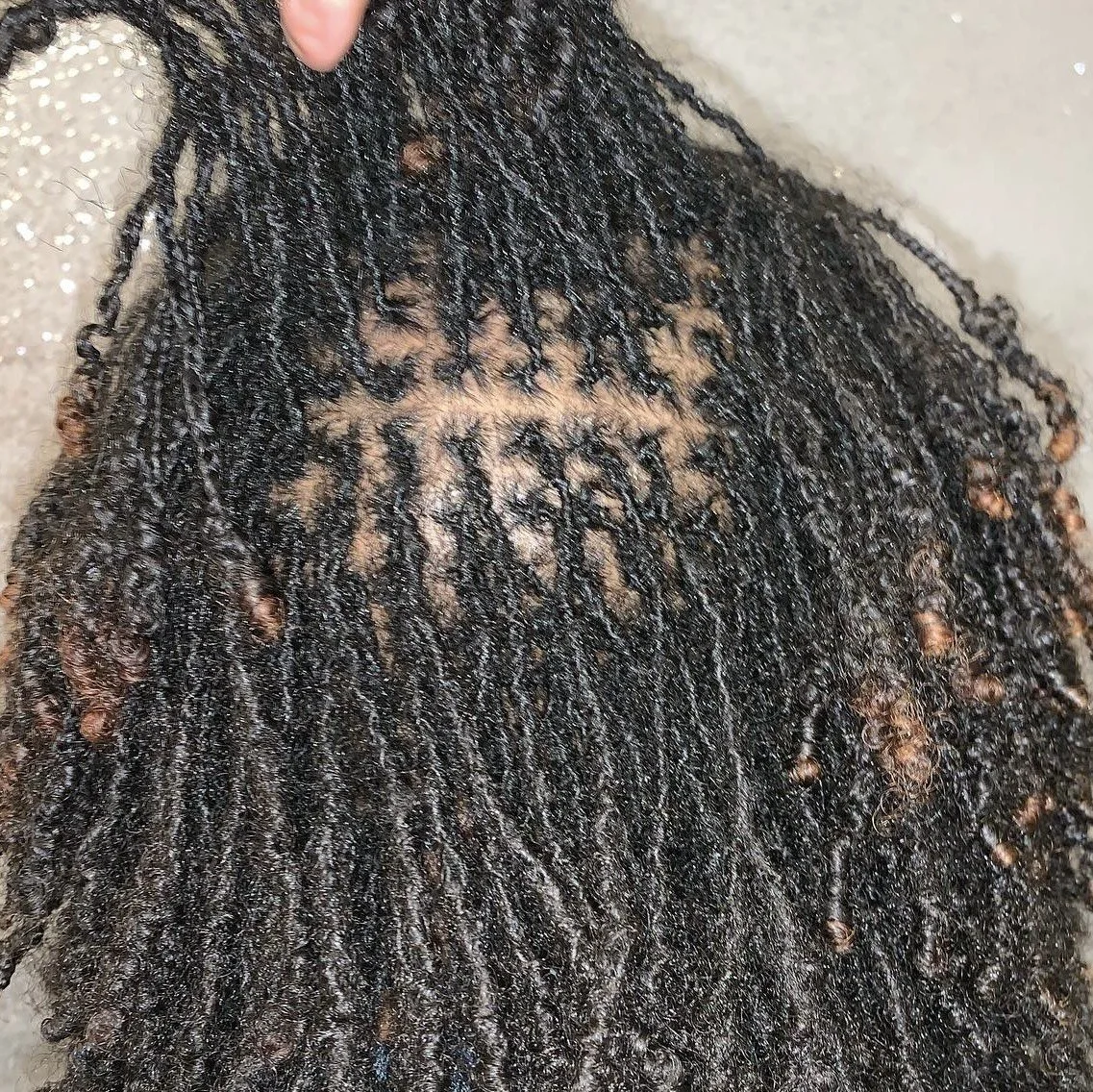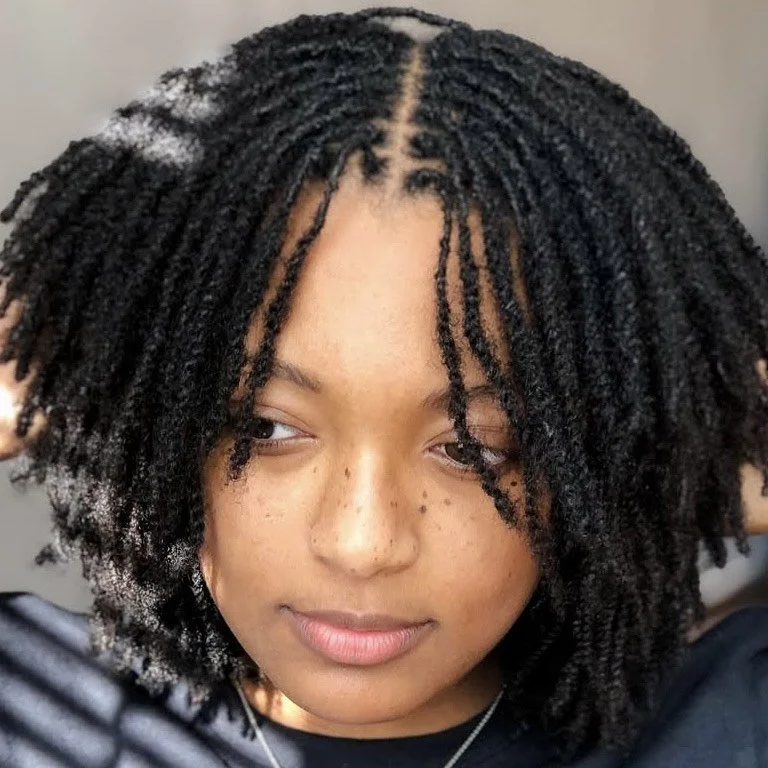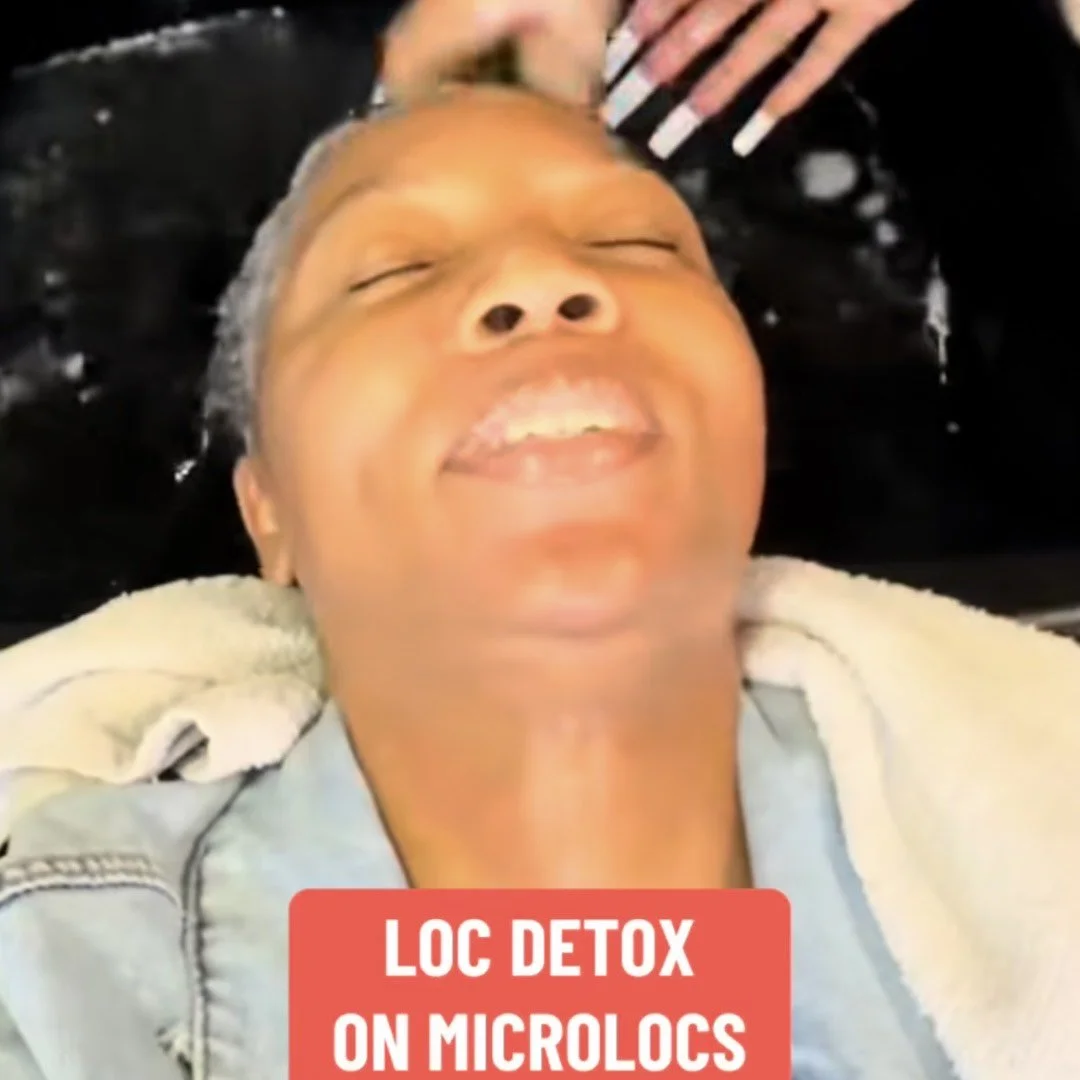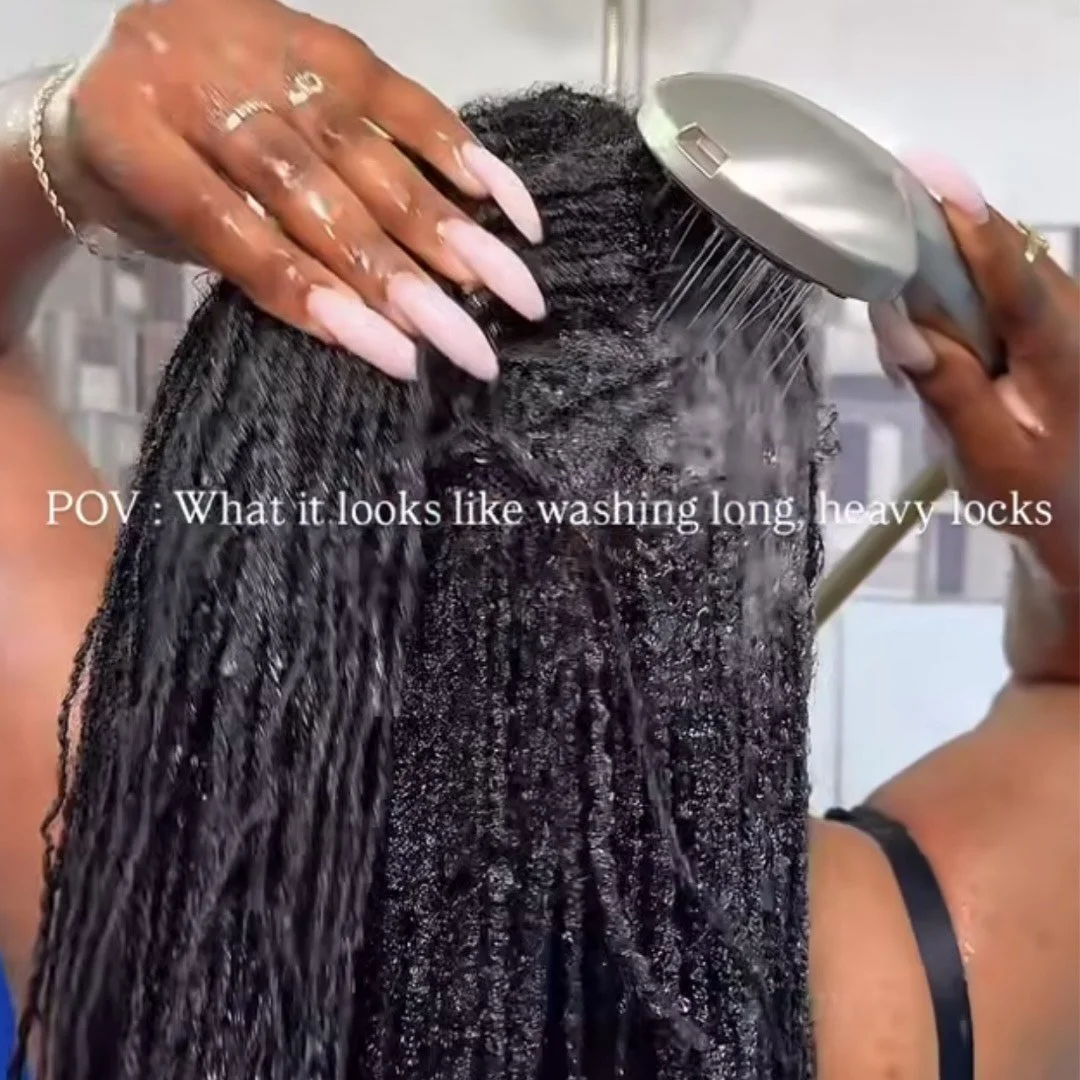Microlocs Build-Up 101: How to Prevent & Remove Product Build-Up
The microlocs journey is full of joys and rewards, but product build-up is one challenge that can sneak up if you’re not intentional about maintenance. Build-up happens when product residue gets trapped inside your locs. Product build-up is slightly different than lint build-up. If left unaddressed, it can weigh them down (which may lead to thinning), cause scalp irritation, and create visible discoloration throughout your hair. The good news? With the right education and a few simple best practices, you can easily prevent build-up and remove it when it appears.
What Causes Build-Up in Microlocs?
Build-up can come from several sources, but the two biggest factors are product choice and improper maintenance. While the right products can support healthy microlocs and make styling easier, using the wrong formulas or not cleansing properly can lead to residue that accumulates inside the locs over time.
Causes of Product-Related Build-Up
Hair Butters, Heavy Creams, and Thick Oils
Ingredients like beeswax, petroleum, shea butter, cocoa butter, and thick oils such as coconut, castor, and batana oil are highly prone to causing build-up. They can solidify in cooler temperatures and they often sit on top of the hair rather than absorbing. This causes them to easily get trapped inside maturing locs and the build-up can be extremely difficult to remove, even with clarifying shampoos. While these products are great for loose natural hair, they are not ideal for microlocs or Sisterlocks.
Hair Wax, Gels & Heavy-Hold Mousses
Strong-hold styling products often contain waxes, polymers, and resins that dry onto the hair and cling to the loc shaft. Thick gels and pomades can create sticky residue. Wax-based products trap lint and dirt. And, heavy-hold mousses often contain hard-to-remove polymers that leave a film. These formulas can quickly lead to build-up when used on microlocs, especially in excess.
Excess Products
Even “loc-safe” products can cause build-up if you use too much. Applying too much mousse for styling, over-oiling the scalp, or layering multiple products between washes can create issues. With microlocs, less is more. Use only what you need, and avoid reapplying products daily.
Other Causes of Build-up
Hard Water Minerals
Hard water, which contains high levels of calcium, magnesium, and sometimes iron, is a major but often overlooked source of buildup. When minerals attach to the hair, they crystallize as the hair dries and harden inside the loc structure over time. Mineral build-up often resembles product build-up, but is much harder to remove and can make locs feel dull, stiff, or gritty.
Inconsistent Cleansing Routines
Skipping wash days or not rinsing thoroughly can leave shampoo residue, product sitting on the scalp, or dirt, oil, and sweat trapped inside the locs. Microlocs generally benefit from weekly or bi-weekly washing, depending on your activity level, environment, and scalp needs.
Dandruff or Dry Scalp Conditions
If you’re dealing with dandruff, dry scalp, or seborrheic dermatitis, the flakes can accumulate at the base of your locs and contribute to build-up. Dead skin cells shed continuously, and without proper cleansing, they can settle within your locs, especially near the roots.
How to Remove Buildup From Your Microlocs
Notice build-up in your microlocs? You can remove it with clarifying / cleansing shampoos, ACV or baking soda rinses, or by seeking professional removal from a loctician.
Eliminate Residue with a Clarifying Shampoo for Microlocs
The easiest way to tackle buildup is with a clarifying shampoo. These shampoos are designed to remove surface residue from styling products, oils, and everyday dirt. They gently cleanse both your scalp and locs, leaving your microlocs feeling light, refreshed, and residue-free without causing damage. Our Microlocs & Sisterlocks Shampoo Guide features top recommendations, detailed ratings, and honest reviews to help you choose the best cleansing products for your locs.
Deep Clean with an ACV or Baking Soda Rinse
Apple cider vinegar (ACV) and baking soda rinses are popular ways to detox and refresh your microlocs. You can use each rinse on its own or combine them for a deep-cleansing treatment. Afterward, be sure to moisturize your locs to prevent dryness and maintain healthy, soft hair.
Get Quality and Convenience with Professional Removal
Professional removal is the best option if you want convenience or are dealing with stubborn, long-term build-up. Experienced locticians use specialized tools, techniques, and products to deeply cleanse your locs, thoroughly removing residue without causing damage.
Tips on How to Prevent Build-Up in Your Microlocs
Updating your daily hair habits is key to preventing build-up in microlocs. Keep these five quick tips in mind to maintain clean, healthy locs:
Choose residue-free products. Use products specifically designed for locs. Light, water-soluble, and liquid-based formulas are better than heavy waxes, gels, or butters that can get trapped inside your locs.
Dilute thick products. If you use thicker oils or creams, dilute them before application. Apply directly to the scalp instead of the loc shaft to prevent residue from accumulating inside your locs.
Rinse thoroughly. When cleansing, squeeze your locs from root to tip to ensure all shampoo and product residue is removed. Incomplete rinsing is a common cause of build-up.
Protect against hard water. If you live in a hard water area or travel often, replace your showerhead filter to reduce mineral build-up.
Dry your locs completely. Always ensure your locs are fully dry after washing. Damp locs can develop mildew, odor, and build-up, which can damage your hair over time.
Some build-up is normal, especially for new or maturing locs, so don’t feel discouraged. The key is to apply products sparingly, maintain a consistent cleansing routine, and address build-up early.
Want to see these tips in action? Check out wash and hair care videos from a variety of microlocs creators for demonstrations and step-by-step guidance.
Picture featured in cover photo is from @marishka__xo.


